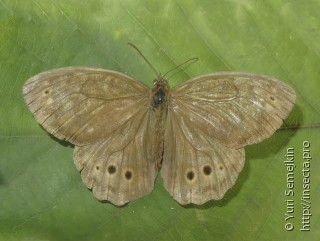Photo #59188: Kirinia sp.
Imago

Click image to enlarge
Base gallery. Upperside. Alive insect.
Photo, and identified by: Yuri Semejkin. Image without retouching at the website
Date and time, location shooting/catching: 2016-08-08 00:00:00, Vladivostok, Akademgorodok
Comments on this image
Your comment
Please, create an account or log in to add comments.
Other photos of the same specimen
Other photos Kirinia sp.
Please, create an account or log in to upload your photo
News
- 31.12.2024: Если нужно загрузить на сайт много фотографий
- 10.12.2024: Новое поле в «Поиске энтомологов»
- 05.12.2024: Insecta.pro maps: filter by taxon
New photos (30.01.2025)
Fresh from the community
- 0:24, V. Titov: Я бы по фото до вида даже пытаться ...
- 12:03, M. Niobius: PS чисто по фото в сети ближе Chole...
- 11:08, M. Niobius: Виктор, спасибо! Редкая для меня на...
Popular insects
Recommended blog topics
- Meantime in Japan
- Interview with Alexander Zatakovoy, one of the wild Russian entomologists
- Maine needs butterfly surveyors













